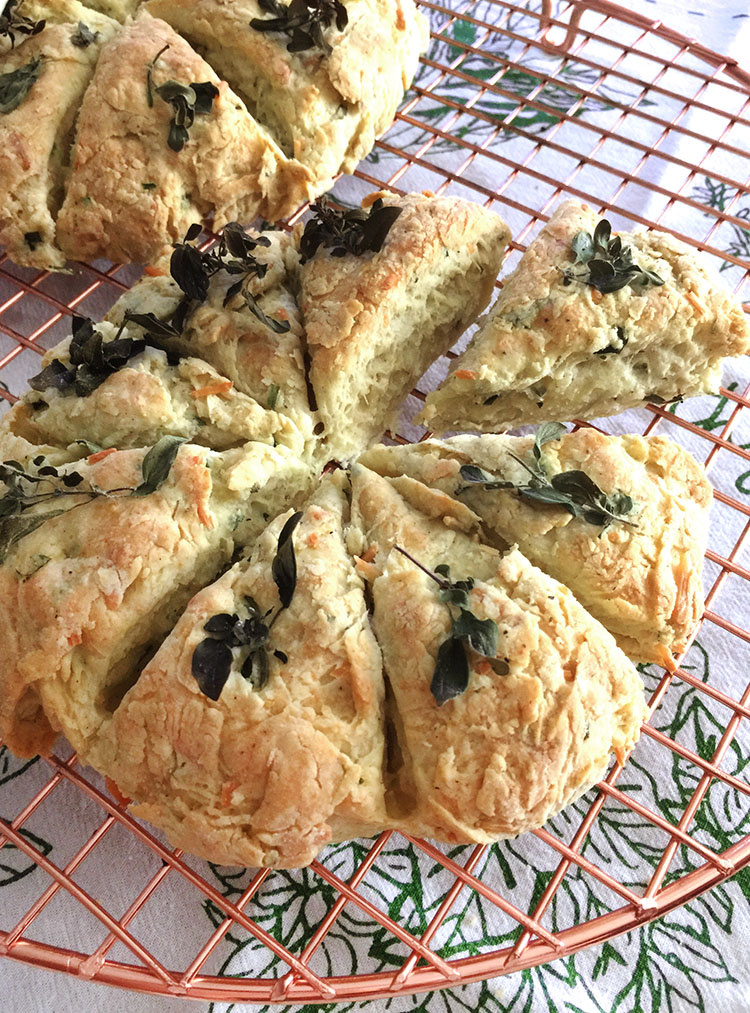
Sometimes, all the planets (or ingredients and time of the year) align in order to make the right recipe. I was recently thumbing through my original favorite scone book, “Biscuits and Scones,†(Clarkson N. Potter; 1988) by Elizabeth Alston. You would think I had made every recipe in the book, but far from it…I had made a number of favorites multiple times over the years — and the splatter-stained and sugar-crunchy pages singled those out — but there were others that I ran across as if I’d seen them for the first time.
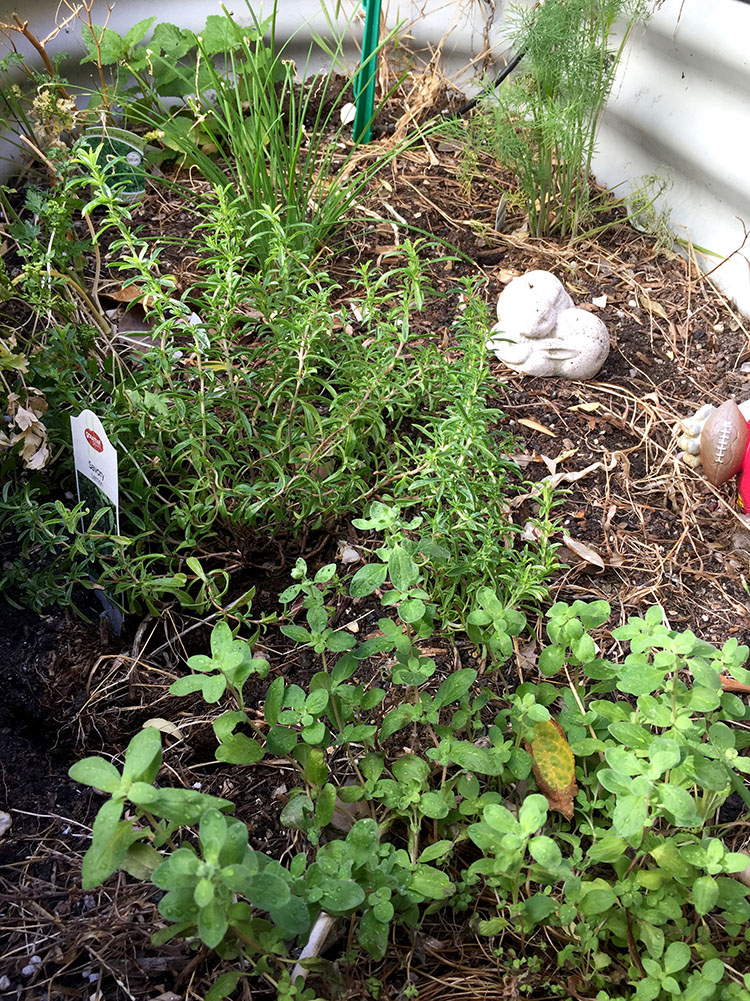
[L]ike the one for Fresh Herb-Olive Oil Scones. How intriguing! That a scone could be made without butter, which seems to be the cornerstone for all scones, was quite interesting as a possibility for this month’s bread recipe. And, also the fact that one of the herbs suggested for this summer-y scone is marjoram (along with basil, chives and thyme), of which I had recently been cultivating in a mini herb garden. What other sign did I need to get cracking and make these?
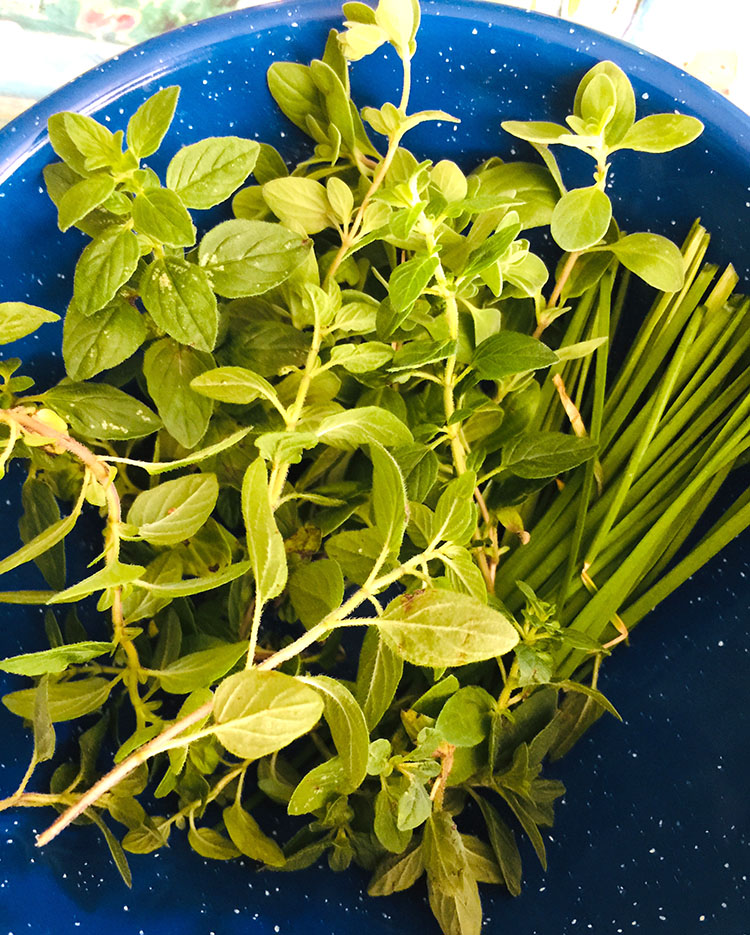
[M]arjoram, is really a nice herb, flavored a little like oregano with just a hint of a soft, fennel-like taste, it’s also a more tender herb, less woody than some of its counterparts. I rounded out the herbs I gathered from my garden with some garlic chives and a little mother-of-thyme (or “big thymeâ€), as well as some purchased basil.

[I] got a nice brand of olive oil to use for these. I sometimes go no-frills with olive oil for cooking, but I wanted the olive oil flavor to be clean, but also full and robust, as good olive oil is.
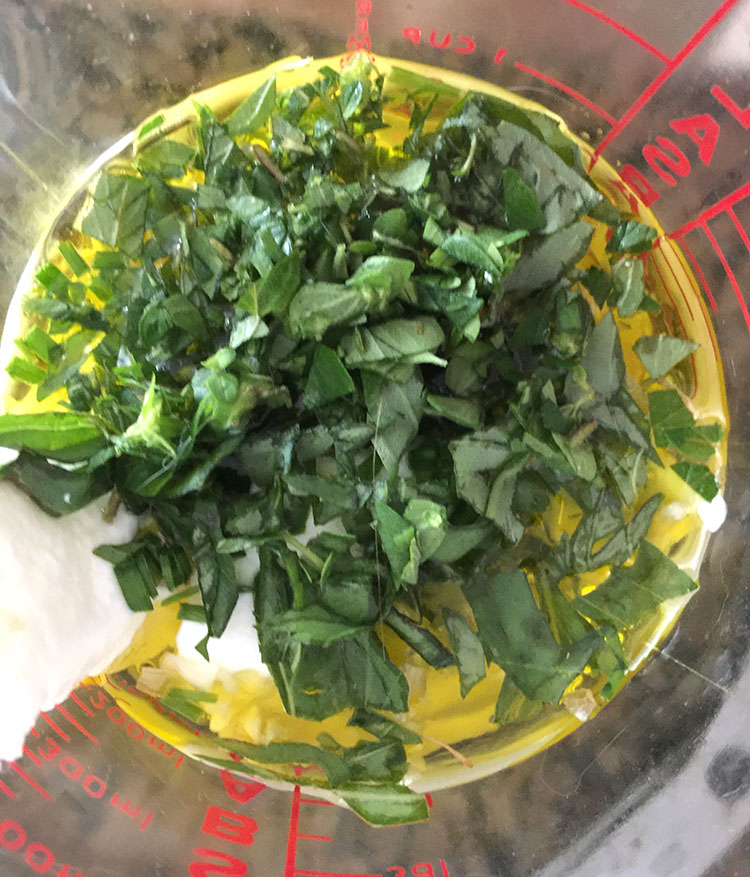
[T]he oil, along with some plain yogurt, the chopped herbs, a little chopped garlic, lemon juice and an egg were whisked together for the wet ingredients.
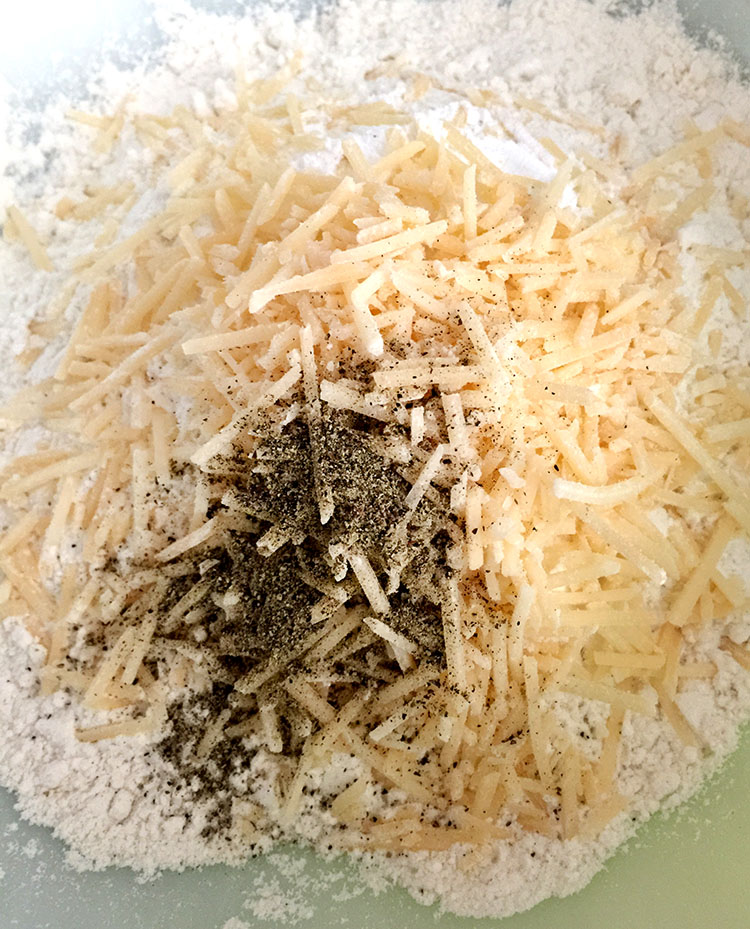
[T]he dry ingredients of flour baking powder, salt, black pepper and some shredded parmesan cheese, were blended together thoroughly.
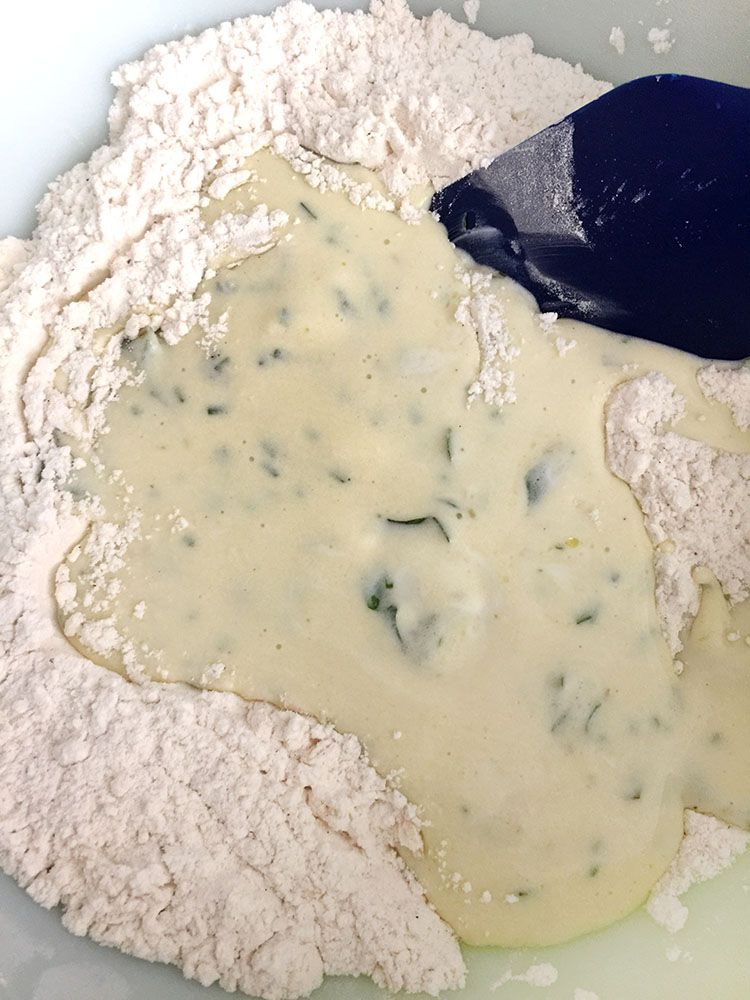
[T]he measuring cup of wet ingredients were then added to the dry, stirring just to bring everything together.
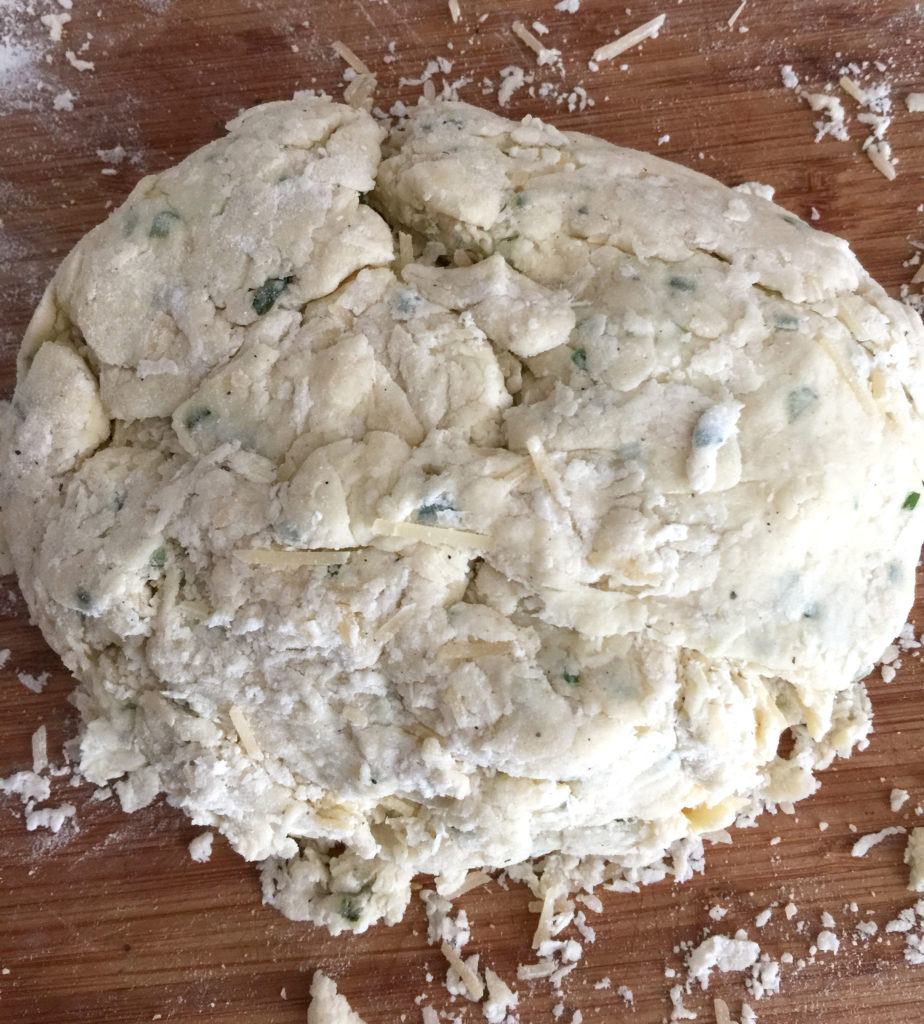
[T]he slightly dry, shaggy dough was brought out on a floured board for some brief kneading. I liked the way the herbs looked and smelled in the scones already.
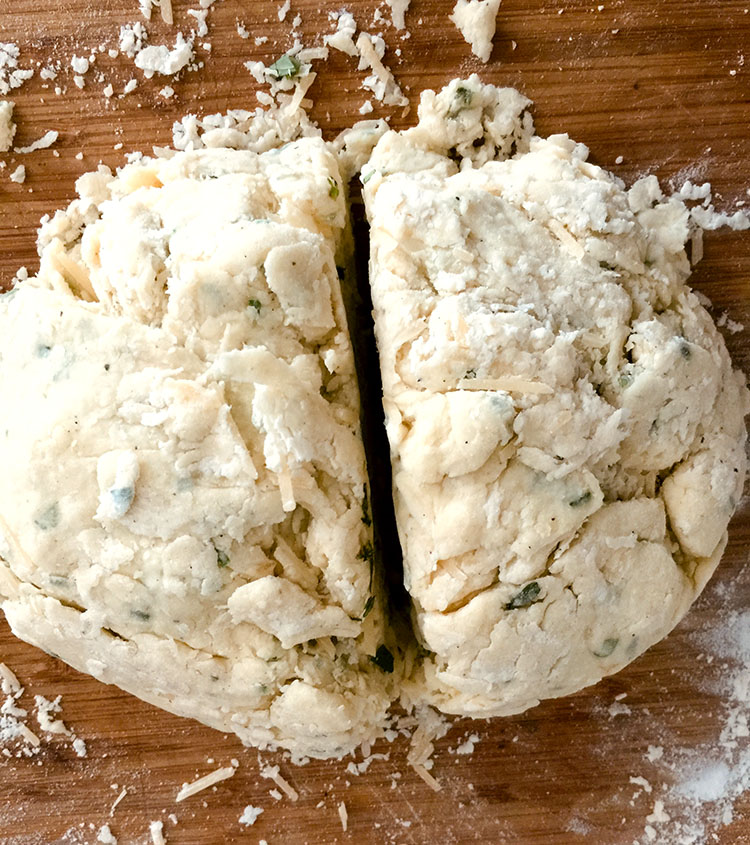
[T]he dough was then cut in half and patted into flat rounds on a large parchment-lined sheets.
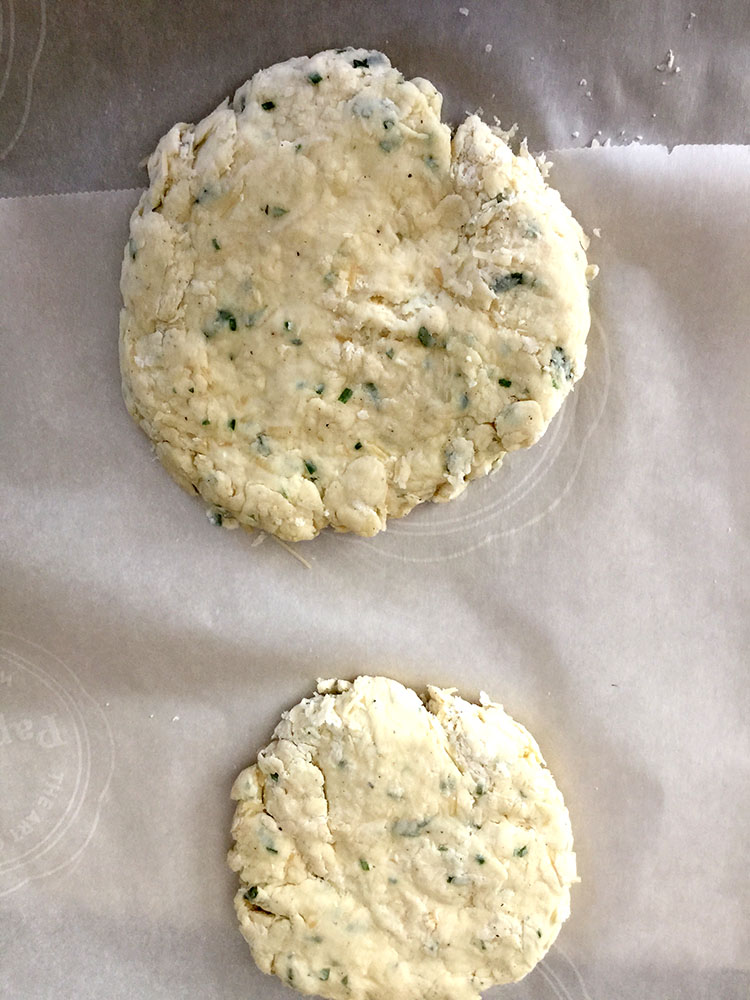
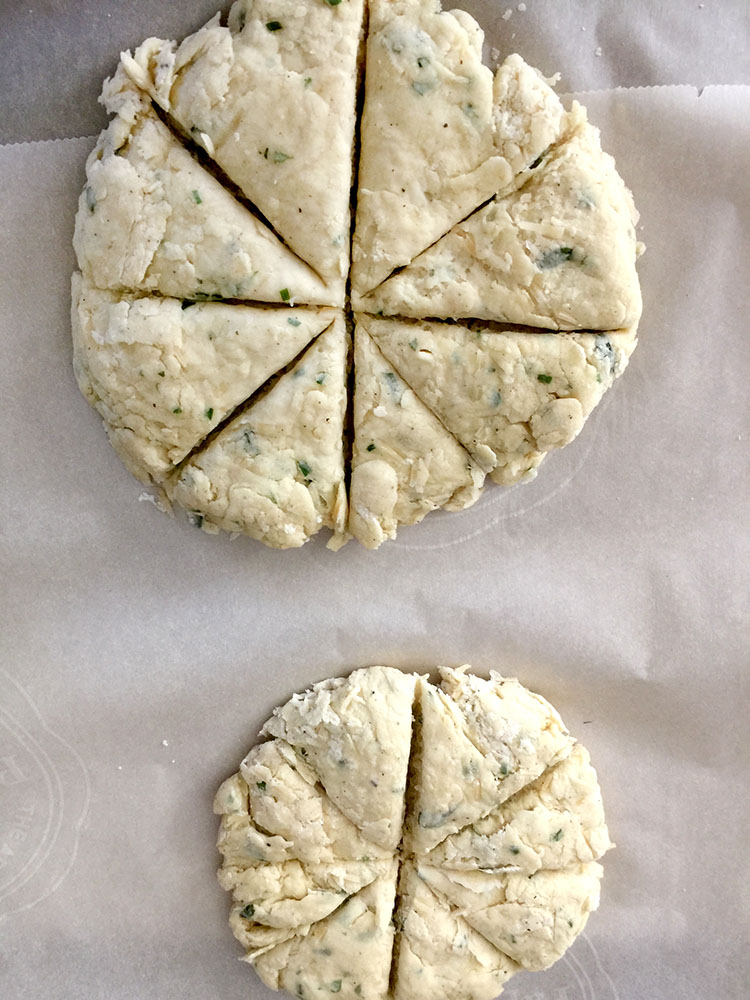
[E]ach round was cut into eight even wedges, leaving the scone rounds together and not separating the wedges.
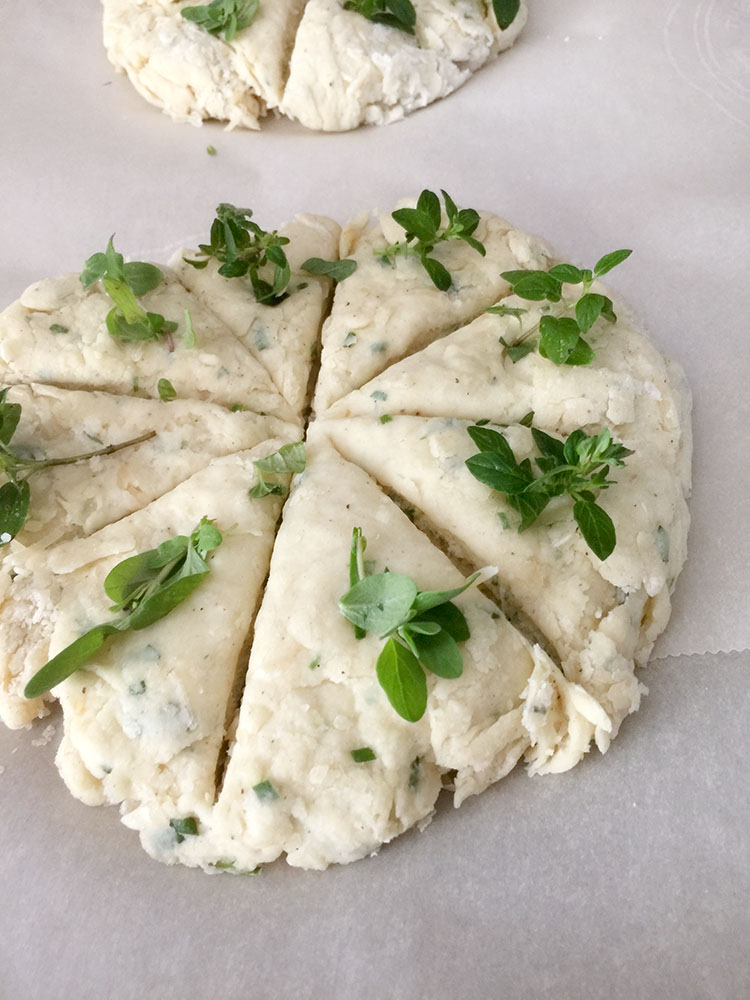
[I ]had additional thyme and marjoram left, so I decorated each wedge with a little of the green sprigs.
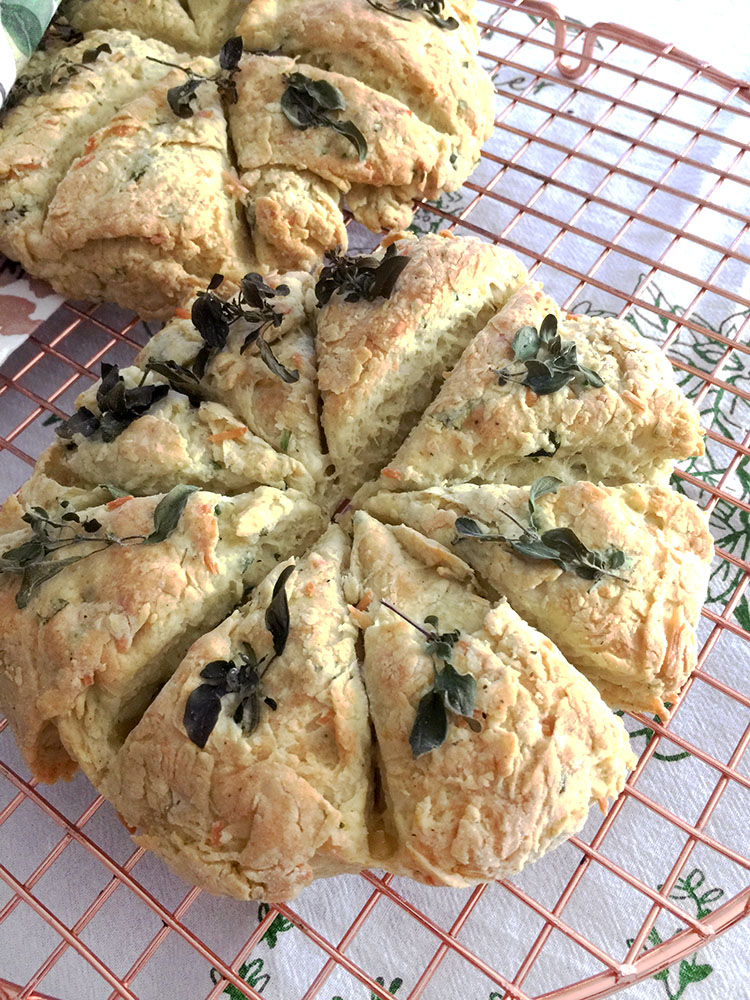
[T]he scones baked to a beautiful golden brown, puffing up a little and giving off an aroma of tangy Parmesan and earthy herbs.
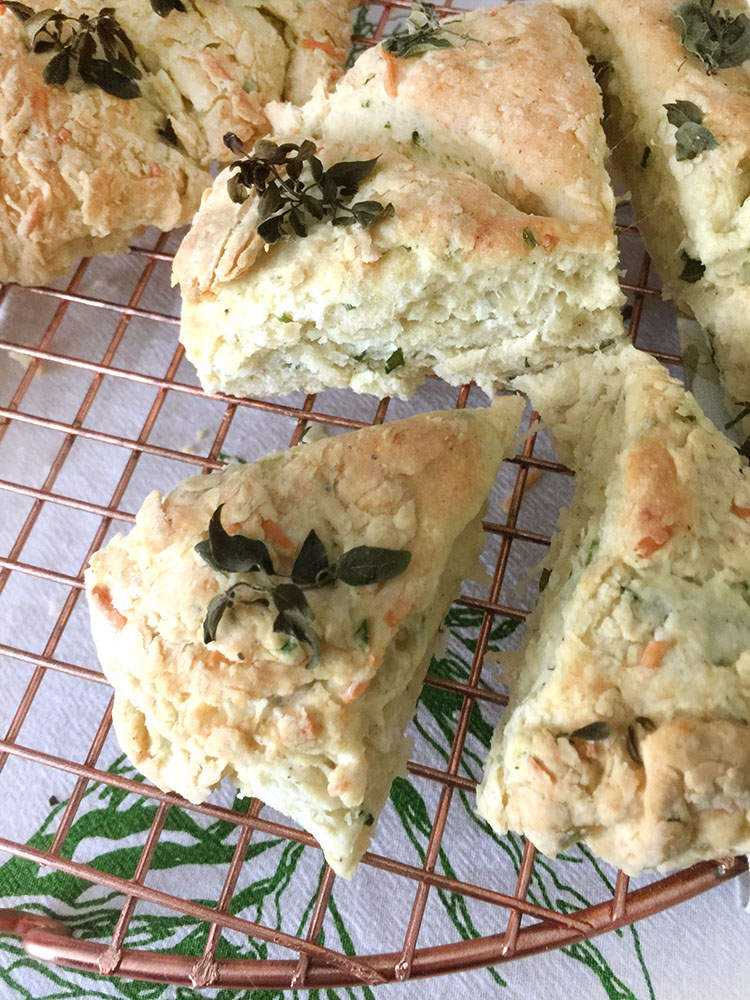
[T]he scones cooled a little before I dug in. I was surprised by the texture, a little tender, a little crusty and chewy with a flaky top, somewhat like a cross between a biscuit and a good table sourdough bread, like something you would get warm in a basket at a restaurant..and ask for more. The Parmesan and lemon juice added just a hint of tang; the aromatic herbs and garlic gave a pizza/foccaccia-like taste for a hearty, but light, savory scone. These would (and did) go perfectly with a main dish salad, and I could imagine them easily with soup, too. I’m glad I discovered this recipe resting under my nose the whole time.
Fresh Herb-Olive Oil Scones
From “Biscuits and Scones; 62 Recipes from Breakfast Biscuits to Homey Desserts,â€
by Elizabeth Alston (Clarkson N. Potter; 1988)
Makes 16 scones
- 2 cups all-purpose flour
- 1 tablespoon baking powder
- 1/4 cup coarsely grated Parmesan cheese
- 1/2 teaspoon salt
- 1/4 teaspoon freshly ground black pepper
- 1/2 cup buttermilk or plain yogurt
- 1/3 cup olive oil (extra-virgin, virgin or light)
- 1 large egg
- 2 teaspoons lemon jice
- 1/2 teaspoon minced fresh garlic
- 2 tablespoons snipped chives, or the green part of green onions, thinly sliced
- 1 tablespoon chopped fresh basil leaves
- 1 teaspoon coarsely chopped fresh marjoram, thyme or oregano leaves.
Heat oven to 375°. Put flour, baking powder, Parmesan, salt and pepper into a large bowl. Stir to mix well.
In another bowl, whisk buttermilk, oil, egg, lemon juice, garlic, chives and herbs until well-blended.
Scrape herb mixture into flour. Stir with a spoon until a soft dough forms.
Turn out dough onto a lightly floured board and give 10 to 15 kneads. Gather dough into a ball and cut in half. Place both halves on a cookie sheet and roll or pat into an 8- or 9-inch round. Cut each circle into 8 wedges; do not separate wedges.
Bake 15 to 20 minutes or until lightly browned. Put on a wire rack to cool for 5 minutes. Wrap loosely in a dish towel on the rack and cool at least 15 to 20 minutes more before serving.[